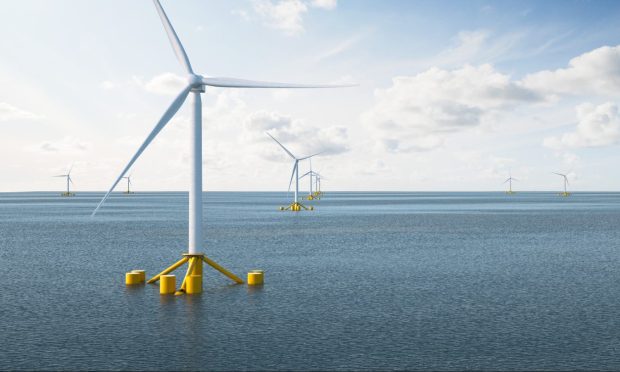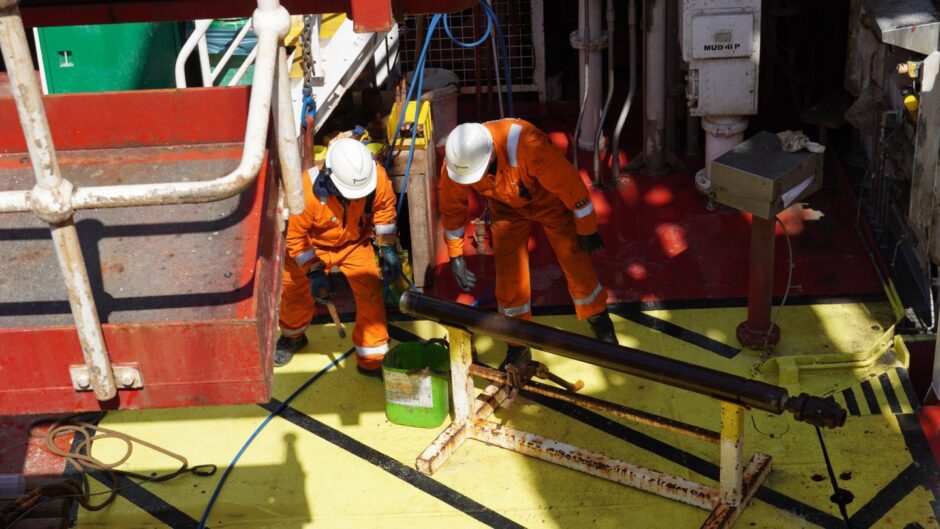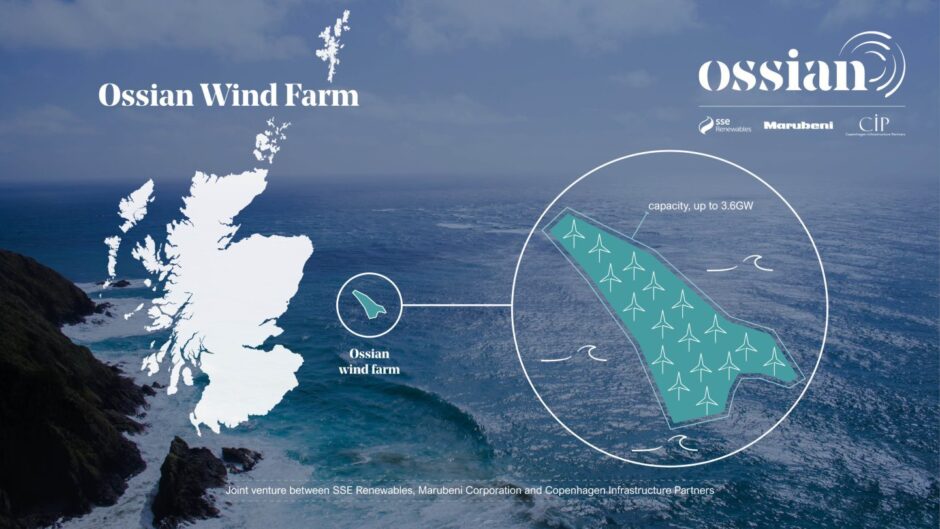Developers will host online consultations to help people understand why the Ossian wind farm project is a game changer in Scotland’s clean energy production.
-
Some Press and Journal online content is funded by outside parties. The revenue from this helps to sustain our independent news gathering. You will always know if you are reading paid-for material as it will be clearly labelled as “Partnership” on the site and on social media channels.
This can take two different forms.
“Presented by”
This means the content has been paid for and produced by the named advertiser.
“In partnership with”
This means the content has been paid for and approved by the named advertiser but written and edited by our own commercial content team.
Ossian, named after the legendary Poems of Ossian, is set to be one of the largest floating offshore wind farms in the world. The project will cover 858km2 of seabed located more than 80km off the east coast of Scotland. This is one of the largest lease areas that Crown Estate Scotland offered to any bidder in the ScotWind leasing round.
Ossian lives up to its name both in size and in power. This comes from harnessing a new kind of technology – floating offshore wind. Unlike common wind turbines that are fixed to the bottom of the ocean floor, Ossian’s more than 200 turbines will be built on floating steel or concrete bases anchored to the seabed by mooring lines. This technology allows access to the wider seabed and deeper waters for higher wind speed and optimised energy production.
It’s no wonder then that Ossian will be able to deliver a potential capacity of up to 3.6GW. That’s enough to power up to 6 million homes annually.
Ossian will also be able to offset an estimated 7.5 million tonnes of carbon emissions every year. This is key in helping the Scottish government achieve its net zero target by 2045.
This represents a golden opportunity for Scotland to be a global leader in the floating offshore wind sector.
Ossian wind farm supports local communities
The floating wind farm will support the local community by generating jobs. For example, local contractors are expected to work on the quayside installation of the project’s floating wind turbines. Ossian can also employ local engineering and manufacturing experts who have worked in the oil and gas industry.
Primary school children across the north of Scotland will also benefit from enhanced lessons after Ossian committed £200k towards the expansion of the University of the Highlands and Islands’ STEM outreach programme.
Ossian: a global consortium
Companies from around the world – Japanese floating wind developer Marubeni Corporation, Danish fund management firm Copenhagen Infrastructure Partners and Scottish company SSE Renewables Limited – are all teaming up for this ambitious venture which is expected to produce first power before the end of this decade.
With a shared commitment to sustainability, they are combining their extensive knowledge and unparalleled global expertise in developing offshore wind farms to deliver Ossian at speed to respond to the climate emergency.
Ossian completes essential surveys
Last year, Ossian was the first ScotWind floating offshore wind farm to complete essential geotechnical surveys. These will be key to understanding the engineering properties of the seabed across the site.
Collaborating with other ScotWind developers, Ossian also conducted an 18-month digital aerial survey. That study documented the habits of more than 75,000 birds in the North Sea, covering two full seabird breeding seasons.
Fraser Malcolm, Ossian’s offshore consents manager says: “We want to understand how Ossian may affect the local populations of seabirds and marine mammals.
“Preservation and enhancement of the natural environment is a responsibility we take very seriously. We go into a range of environmental impact assessment topics in depth to ensure we’re fully understanding our impacts. We try to mitigate impacts as far as possible. It demonstrates our commitment to developing Ossian sustainably.”
A virtual public consultation goes live today and will run for four weeks. Over the course of the month there will be four live question and answer sessions that will cover project introduction, environmental assessments, supply chain and the human environment. Interested parties will be able to leave feedback via online forms.
Click here to visit Ossian’s dedicated consultation platform to take part.


